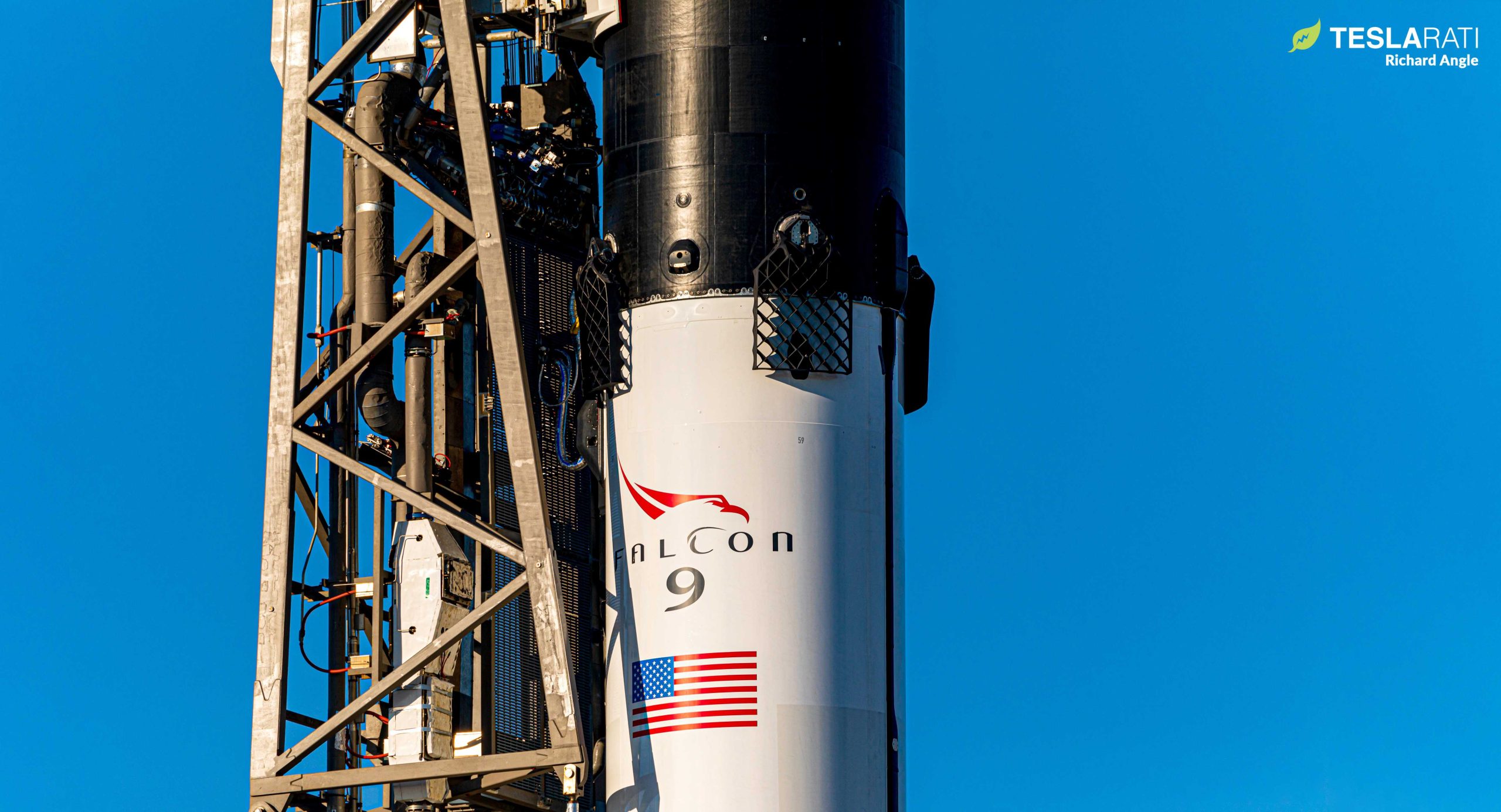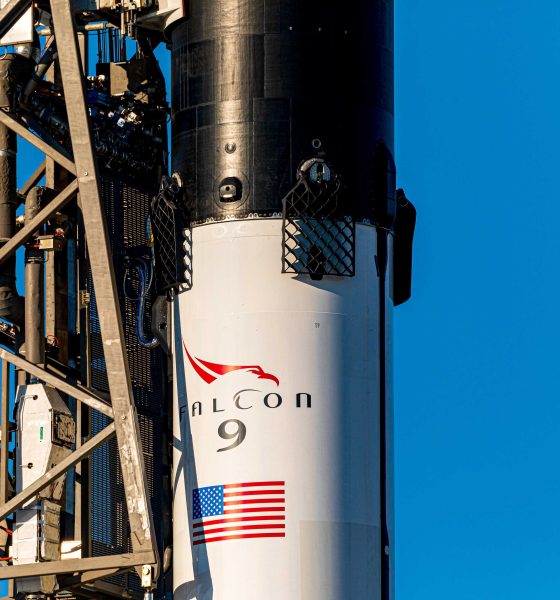

News
SpaceX Falcon 9 launch and landing scrubbed by wind as drone ship battles high seas
SpaceX’s CRS-19 Falcon 9 launch and landing has been scrubbed by wind conditions miles above the ground at the same time as the rocket’s drone ship landing platform battles high seas in the Atlantic Ocean.
SpaceX decided to stand down from Wednesday’s launch attempt for NASA’s CRS-19 International Space Station (ISS) resupply mission due to unacceptably high upper-level winds. Previously scheduled to lift off around 12:51 pm ET (16:51 UTC) on December 4th, NASA and SpaceX have recycled the mission and are now targeting 12:29 pm ET (16:29 UTC) on December 5th, slightly different to account for the ever-changing position of the ISS.
In rocketry, upper-level winds have always been a bit of a problem: different air currents at different altitudes can produce an effect akin to running sideways along a series of treadmills, dramatically increasing the risk of a rocket’s structure failing under longitudinal loads. At the same time, drone ship Of Course I Still Love You – set to recover Falcon 9 booster B1059 shortly after its launch debut – is dealing with high seas in the Atlantic Ocean, raising the risk of the booster suffering damage during landing or even toppling off the deck.

CRS-19 features a flight-proven Cargo Dragon capsule (C106) that has visited the ISS not once, but twice. It previously completed SpaceX’s fourth and eleventh Commercial Resupply contract missions in 2014 and 2017 and will be the second time a twice-flown Dragon capsule heads to orbit for the third time. After berthing at the ISS around December 8th (assuming a Thursday launch), Dragon will depart the ISS and land in the Pacific Ocean sometime in early January, about a month after arriving at the station.
Along with a recycled Dragon capsule, the CRS-19 mission will feature a fresh-from-the-factory Falcon 9 booster – in this case, B1059.1. New Falcon 9 boosters have become a rarity in 2019, and this mission’s only flight-proven hardware will actually be the orbital spacecraft, Cargo Dragon.
B1059.1 is the first fresh Falcon 9 core to be flown since the STP-2 Falcon Heavy in June of 2019. The booster is expected to return for landing aboard the autonomous spaceport droneship Of Course I Still Love You.
Science On Board
Waiting patiently atop Falcon 9, Cargo Dragon is loaded with almost 5800 pounds (2650 kg) of cargo, including more than 250 science investigations and technology demonstrations to be performed on the ISS. Investigations include a look into the process of malting barley seeds (i.e. beer) in a microgravity environment to hopefully improve the process on Earth and explore possible nutritional use for future long-duration space missions.
Another prominent investigation – Rodent Research-19 or “Mighty Mice in Space” – is sending live mice to the ISS to investigate a preventative measure to prevent muscle and bone loss caused by long-term microgravity exposure, potentially aiding astronauts on long-duration space missions. According to NASA, “this therapeutic approach may be optimal in conditions characterized by both muscle and bone loss. Hence, this therapeutic strategy may have significant advantages for certain applications, including treatment of muscle and bone loss during spaceflight.”
SpaceX will provide a webcast of the launch attempt that will go live about 15 minutes prior to liftoff, NET 12:29 pm ET (16:29 UTC), December 5th.
Check out Teslarati’s Marketplace! We offer Tesla accessories, including for the Tesla Cybertruck and Tesla Model 3.

News
Tesla starts showing how FSD will change lives in Europe
Local officials tested the system on narrow country roads and were impressed by FSD’s smooth, human-like driving, with some calling the service a game-changer for everyday life in areas that are far from urban centers.

Tesla has launched Europe’s first public shuttle service using Full Self-Driving (Supervised) in the rural Eifelkreis Bitburg-Prüm region of Germany, demonstrating how the technology can restore independence and mobility for people who struggle with limited transport options.
Local officials tested the system on narrow country roads and were impressed by FSD’s smooth, human-like driving, with some calling the service a game-changer for everyday life in areas that are far from urban centers.
Officials see real impact on rural residents
Arzfeld Mayor Johannes Kuhl and District Administrator Andreas Kruppert personally tested the Tesla shuttle service. This allowed them to see just how well FSD navigated winding lanes and rural roads confidently. Kruppert said, “Autonomous driving sounds like science fiction to many, but we simply see here that it works totally well in rural regions too.” Kuhl, for his part, also noted that FSD “feels like a very experienced driver.”
The pilot complements the area’s “Citizen Bus” program, which provides on-demand rides for elderly residents who can no longer drive themselves. Tesla Europe shared a video of a demonstration of the service, highlighting how FSD gives people their freedom back, even in places where public transport is not as prevalent.
What the Ministry for Economic Affairs and Transport says
Rhineland-Palatinate’s Minister Daniela Schmitt supported the project, praising the collaboration that made this “first of its kind in Europe” possible. As per the ministry, the rural rollout for the service shows FSD’s potential beyond major cities, and it delivers tangible benefits like grocery runs, doctor visits, and social connections for isolated residents.
“Reliable and flexible mobility is especially vital in rural areas. With the launch of a shuttle service using self-driving vehicles (FSD supervised) by Tesla in the Eifelkreis Bitburg-Prüm, an innovative pilot project is now getting underway that complements local community bus services. It is the first project of its kind in Europe.
“The result is a real gain for rural mobility: greater accessibility, more flexibility and tangible benefits for everyday life. A strong signal for innovation, cooperation and future-oriented mobility beyond urban centers,” the ministry wrote in a LinkedIn post.
News
Tesla China quietly posts Robotaxi-related job listing
Tesla China is currently seeking a Low Voltage Electrical Engineer to work on circuit board design for the company’s autonomous vehicles.

Tesla has posted a new job listing in Shanghai explicitly tied to its Robotaxi program, fueling speculation that the company is preparing to launch its dedicated autonomous ride-hailing service in China.
As noted in the listing, Tesla China is currently seeking a Low Voltage Electrical Engineer to work on circuit board design for the company’s autonomous vehicles.
Robotaxi-specific role
The listing, which was shared on social media platform X by industry watcher @tslaming, suggested that Tesla China is looking to fill the role urgently. The job listing itself specifically mentions that the person hired for the role will be working on the Low Voltage Hardware team, which would design the circuit boards that would serve as the nervous system of the Robotaxi.
Key tasks for the role, as indicated in the job listing, include collaboration with PCB layout, firmware, mechanical, program management, and validation teams, among other responsibilities. The role is based in Shanghai.
China Robotaxi launch
China represents a massive potential market for robotaxis, with its dense urban centers and supportive policies in select cities. Tesla has limited permission to roll out FSD in the country, though despite this, its vehicles have been hailed as among the best in the market when it comes to autonomous features. So far, at least, it appears that China supports Tesla’s FSD and Robotaxi rollout.
This was hinted at in November, when Tesla brought the Cybercab to the 8th China International Import Expo (CIIE) in Shanghai, marking the first time that the autonomous two-seater was brought to the Asia-Pacific region. The vehicle, despite not having a release date in China, received a significant amount of interest among the event’s attendees.
Elon Musk
Elon Musk and Tesla AI Director share insights after empty driver seat Robotaxi rides
The executives’ unoccupied tests hint at the rapid progress of Tesla’s unsupervised Robotaxi efforts.

Tesla CEO Elon Musk and AI Director Ashok Elluswamy celebrated Christmas Eve by sharing personal experiences with Robotaxi vehicles that had no safety monitor or occupant in the driver’s seat. Musk described the system’s “perfect driving” around Austin, while Elluswamy posted video from the back seat, calling it “an amazing experience.”
The executives’ unoccupied tests hint at the rapid progress of Tesla’s unsupervised Robotaxi efforts.
Elon and Ashok’s firsthand Robotaxi insights
Prior to Musk and the Tesla AI Director’s posts, sightings of unmanned Teslas navigating public roads were widely shared on social media. One such vehicle was spotted in Austin, Texas, which Elon Musk acknowleged by stating that “Testing is underway with no occupants in the car.”
Based on his Christmas Eve post, Musk seemed to have tested an unmanned Tesla himself. “A Tesla with no safety monitor in the car and me sitting in the passenger seat took me all around Austin on Sunday with perfect driving,” Musk wrote in his post.
Elluswamy responded with a 2-minute video showing himself in the rear of an unmanned Tesla. The video featured the vehicle’s empty front seats, as well as its smooth handling through real-world traffic. He captioned his video with the words, “It’s an amazing experience!”
Towards Unsupervised operations
During an xAI Hackathon earlier this month, Elon Musk mentioned that Tesla owed be removing Safety Monitors from its Robotaxis in Austin in just three weeks. “Unsupervised is pretty much solved at this point. So there will be Tesla Robotaxis operating in Austin with no one in them. Not even anyone in the passenger seat in about three weeks,” he said. Musk echoed similar estimates at the 2025 Annual Shareholder Meeting and the Q3 2025 earnings call.
Considering the insights that were posted Musk and Elluswamy, it does appear that Tesla is working hard towards operating its Robotaxis with no safety monitors. This is quite impressive considering that the service was launched just earlier this year.








